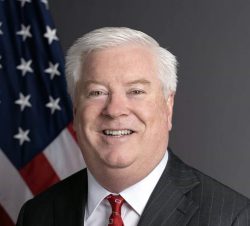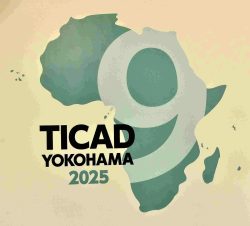
19:49 JST, May 20, 2021
Everyone was already in the backyard when I arrived at the home of my friend, who recently retired from the university and invited a handful of friends to watch the university-hosted online “reception” together. With the speeches of notables in the background, we carried on with our own celebration, recalling memorable moments from our dear friend’s adventurous years with the university, sipping our fruity sangria and nibbling on a smorgasbord of appetizers we had brought with us.
I didn’t say much, content to be surrounded by soft, friendly voices and spontaneous laughter. On the warm, breezy afternoon, I sat back and basked in the sun, bright but comfortable under the awning. Past the circle of friends I could see a well-kept backyard with potted plants and citrus trees on the periphery. Even with the nonalcoholic version of sangria in my glass, the laid-back atmosphere was intoxicating. Thank goodness for the vaccines, I thought, we are finally out of COVID-imposed social isolation.
Here in the United States, COVID vaccination programs have made huge advances in the last few months. Starting in December with medical personnel and first responders, vaccinations were opened up rapidly to the elderly, and to essential workers including educators. By the end of April, 50% of all U.S. adults had received at least one dose of the vaccine. The state of California, although it struggled a bit in the early stages of the rollout, quickly caught up through February and March, and now, every Californian over 16 is eligible to be vaccinated.
As more and more people complete the course of vaccination, the restrictions on social gatherings have been eased accordingly. For example, outdoor gatherings of fully vaccinated individuals no longer require face coverings or social distancing. This is why we were able to talk, eat and drink freely at my friend’s house, and even give each other a quick hug goodbye. It made us feel almost like we were back to “normal.” We had almost forgotten the joy of a simple backyard gathering and relaxed conversation among close friends.
When I was alone in my own home, suddenly, I felt completely exhausted. I went to bed early, but once I closed my eyes, my brain kept playing back the conversation, the scene, the bright sunlight, and so on, for a couple of hours, until it finally quieted down and allowed me to fall asleep. It was a classic symptom of overstimulation, which, ironically, reminded me of the “Zoom fatigue” I used to experience last fall. With all my classes, meetings and student appointments gone online, I was videoconferencing several hours each weekday. At the end of the day, I had the same strange combination of exhaustion and overexcitement. Over the last nine months, my brain had adjusted and learned to manage the flood of visual and audial information coming through the computer; now, it must adjust back to doing it all in person.
The pocket of normalcy in the privacy of my friend’s home was also juxtaposed against the continued vigilance we must exercise in public spaces, where we come into contact with a random assortment of people who may or may not be fully vaccinated. This public-private dichotomy means that, while my sphere of social interaction is now extended beyond my household of one human and one feline, it is still limited strictly within a small circle of friends who trust one another to conscientiously follow all safety precautions, to protect not only themselves and their family members, but also the interests of public health.
How do we know whom to trust? Strict adherence to face covering and social distancing were the behavioral cues throughout the pandemic; willingness to get tested was added to the list when testing sites were opened up. Once the vaccines began to roll out, the investment of time and effort to get vaccinated at the earliest possible opportunity became what anthropologists call “symbolic capital,” or the credit we get for doing the right thing, in this case, for demonstrating personal care and social responsibility.
As educators we all became eligible for vaccination in February, when vaccine supplies were still unpredictable and finding available appointments could be a time-consuming affair. I was the last to complete the course of vaccination among my friends from the university. As they finished their vaccinations one by one, my friends started asking me when/if I was planning on getting mine. When I finally got my second dose in mid-April, they were excited that we could now get together safely in person. But what if I had decided to wait longer or to not get vaccinated at all? Would they have excluded me from the circle of safety and trust? Would our friendship and collegiality have suffered in the long run?
Beyond concern for my social life, I can’t help but notice that the limited sociality in this period of transition also reinforces the existing social stratification and inequity. Largely white, middle-class knowledge workers, we have been shielded from the devastating financial losses that many have sustained during this pandemic. We also enjoy a great deal of control over our work environment, and yet we became eligible for vaccination much sooner than the general public. The circle of safety and trust is then, a circle of privilege in which only a small fraction of our society is allowed to take part.
The sangria we shared was sweet and lovely but, I realize, has a bit of a bitter aftertaste.

Sawa Kurotani
Kurotani is a professor of anthropology at the University of Redlands.
"Editorial & Columns" POPULAR ARTICLE
-

Violations of Subcontract Law: Major Automakers Must Eliminate Old Practices
-

Local Governments’ Tax Revenues: Devise Ways to Correct Imbalances in Tax Sources
-

5 Japanese Business Dinner Mistakes to Avoid — and What They Taught Me About Business in Japan
-

Heavy Rains in Asia: Support for Victims, Flood-Control Measures Urgently Needed
-

Rice Coupons: A Misguided Approach to Countering Rising Prices
JN ACCESS RANKING
-

Keidanren Chairman Yoshinobu Tsutsui Visits Kashiwazaki-Kariwa Nuclear Power Plant; Inspects New Emergency Safety System
-

Imports of Rare Earths from China Facing Delays, May Be Caused by Deterioration of Japan-China Relations
-

University of Tokyo Professor Discusses Japanese Economic Security in Interview Ahead of Forum
-

Japan Pulls out of Vietnam Nuclear Project, Complicating Hanoi’s Power Plans
-

Govt Aims to Expand NISA Program Lineup, Abolish Age Restriction






















